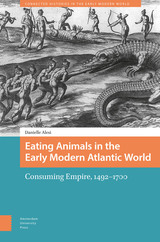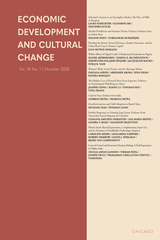9 books about Contemporary Cinema

Film Studies in China
Selected Writings from Contemporary Cinema
Edited by Contemporary Cinema
Intellect Books, 2017
Film Studies in China is a collection of selected articles chosen from issues of the journal Contemporary Cinema published throughout the year and translated for an English-speaking audience. As one of the most prestigious academic film studies journals in China, Contemporary Cinema has been active not only in publishing Chinese scholarship for Chinese readers but also in reaching out to academics from across the globe. This anthology hopes to encourage a cross-cultural academic conversation on the fields of Chinese cinema and media studies.
[more]

Film Studies in China, Volume 2
Selected Writings from Contemporary Cinema
Edited by Contemporary Cinema (China Film Archive)
Intellect Books, 2020
Film Studies in China, Volume 2 is a collection of articles selected from issues of the journal Contemporary Cinema, published throughout the year and translated for an English-speaking audience. As one of the most prestigious academic film studies journals in China, Contemporary Cinema has been active not only in publishing Chinese scholarship for Chinese readers but also in reaching out to academics from across the globe. This anthology hopes to encourage a cross-cultural academic conversation on the fields of Chinese cinema and media studies. Following the successful release of the first volume, this is the second collection to be released in Intellect’s Film Studies in China series.
[more]
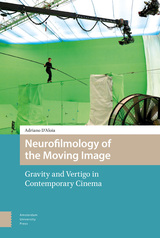
Neurofilmology of the Moving Image
Gravity and Vertigo in Contemporary Cinema
Adriano D'Aloia
Amsterdam University Press, 2021
A walk suspended in mid-air, a fall at breakneck speed towards a fatal impact with the ground, an upside-down flip into space, the drift of an astronaut in the void… Analysing a wide range of films, this book brings to light a series of recurrent aesthetic motifs through which contemporary cinema destabilizes and then restores the spectator’s sense of equilibrium. The 'tensive motifs' of acrobatics, fall, impact, overturning, and drift reflect our fears and dreams and offer embodied forms of transcendence of the limits of our human condition along with an awareness of their insurmountable nature. Adopting the approach of 'Neurofilmology'—an interdisciplinary method that puts filmology, perceptual psychology, philosophy of mind, and cognitive neuroscience into dialogue—this book implements the paradigm of embodied cognition in a new ecological epistemology of the moving-image experience.
[more]
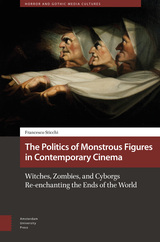
The Politics of Monstrous Figures in Contemporary Cinema
Witches, Zombies, and Cyborgs Re-enchanting the Ends of the World
Francesco Sticchi
Amsterdam University Press, 2025
The book addresses the role of particular monstrous figures and apocalyptic scenarios in contemporary cinema and television and evaluates the political potential of horror and sci-fi narratives in our age of never-ending crises. The purpose of the book is to demonstrate how witches, zombies, and cyborgs (among other figures) present the spectre of new people to come, of new possibilities to inhabit the Earth against the apocalyptic fates of Capitalism.
Written in an ‘acid communist’ spirit, the book shows how it is possible to politicise contemporary popular culture tropes and figures, mapping the anxieties they express and also their undisclosed potential and resources. Balancing personal commentary and academic analyses, the book expresses Deleuzian trust in the power of moving images as instruments that allow us to inhabit the present and believe in this world notwithstanding alleged ends of all worlds.
Written in an ‘acid communist’ spirit, the book shows how it is possible to politicise contemporary popular culture tropes and figures, mapping the anxieties they express and also their undisclosed potential and resources. Balancing personal commentary and academic analyses, the book expresses Deleuzian trust in the power of moving images as instruments that allow us to inhabit the present and believe in this world notwithstanding alleged ends of all worlds.
[more]
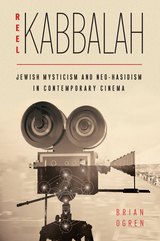
Reel Kabbalah
Jewish Mysticism and Neo-Hasidism in Contemporary Cinema
Brian Ogren
Rutgers University Press, 2024
Reel Kabbalah: Jewish Mysticism and Neo-Hasidism in Contemporary Cinema studies the ways in which fictional film in the first decade of the twenty-first century represents the esoteric Jewish speculative traditions known as Kabbalah and Hasidism. It examines the textual and conceptual traditions behind five important cinematic representations -- Pi (1998), Ushpizin (2004), Bee Season (2005), The Secrets (2007), and A Serious Man (2009) -- and it considers how film both stands in continuity with those traditions and modifies them in the New Age vein of what is known as neo-Kabbalah and neo-Hasidism. Brian Ogren transforms our understanding of reception history by focusing on how cinema has altered perceptions of Jewish mysticism. In showing how the Jewish speculative traditions of Kabbalah and Hasidism have been able to affect mass-consumed cinematic portrayals of ultimate Truth, this book sheds light on the New Age, pop-cultural dialectic of the particular within the universal and of the universal within the particular.
[more]
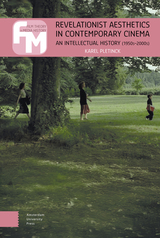
Revelationist Aesthetics in Contemporary Cinema
An Intellectual History (1950s–2000s)
Karel Pletinck
Amsterdam University Press, 2025
On the cusp of the twenty-first century, the notion of art as revelation of reality held sway in film aesthetics and criticism. Where did this seemingly naive belief in the vocation of art originate, what sustained it, and how did it shape the work of filmmakers, as diverse as Jean-Luc Godard, Jean-Marie Straub and Danièle Huillet, and Abbas Kiarostami? These questions launch this book’s exploration of the revelationist tradition from the 1950s to the early 2000s, revisiting a formative period in film history – from Italian Neorealism and the Nouvelle Vague to political modernism – and assessing its lasting impact on contemporary cinema. With the passing of its last major figures, Godard and Straub, in 2022, a critical reassessment of this tradition is timely.
[more]

The Sensory Child of Contemporary Cinema
Sight, Sound, Touch
Nonie May
Amsterdam University Press, 2025
The Sensory Child: Sight, Sound, Touch examines a poetic film form evident in contemporary cinema that seems intent on capturing the textures, the materials, and the sensations of childhood. These films foreground the child’s point of view, construct a child’s gaze, and mobilise an aesthetic that evokes a sensory recollection of childhood. This complex arrangement of aesthetic modes is intended to address the adult spectator bodily, and evoke the vivid, sensory memories of childhood. The Sensory Child rethinks a gap in contemporary film theory created by a seeming hiatus between psychoanalytic and phenomenological approaches to the cinema. The book examines key instances of this aesthetic of childhood in the films Aftersun (2022), The Fits (2015), What Maisie Knew (2013), and Moonlight (2016). May argues that psychoanalytic theory can elucidate the significance of such tactile moments, offering insight into the meaning evoked for the spectator by this sensory, poetic film form.
[more]
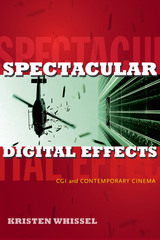
Spectacular Digital Effects
CGI and Contemporary Cinema
Kristen Whissel
Duke University Press, 2014
By developing the concept of the "digital effects emblem," Kristen Whissel contributes a new analytic rubric to cinema studies. An "effects emblem" is a spectacular, computer-generated visual effect that gives stunning expression to a film's key themes. Although they elicit feelings of astonishment and wonder, effects emblems do not interrupt narrative, but are continuous with story and characterization and highlight the narrative stakes of a film. Focusing on spectacular digital visual effects in live-action films made between 1989 and 2011, Whissel identifies and examines four effects emblems: the illusion of gravity-defying vertical movement, massive digital multitudes or "swarms," photorealistic digital creatures, and morphing "plasmatic" figures. Across films such as Avatar, The Matrix, the Lord of the Rings trilogy, Jurassic Park, Titanic, and Crouching Tiger, Hidden Dragon, these effects emblems heighten the narrative drama by contrasting power with powerlessness, life with death, freedom with constraint, and the individual with the collective.
[more]

Terrorism, Italian Style
Representations of Political Violence in Contemporary Italian Cinema
Ruth Glynn
University of London Press, 2012
The legacy of Italy's experience of political violence and terrorism in the anni di piombo ("years of lead," c. 1969-83) continues to exercise the Italian imagination to an extraordinary degree. Cinema has played a particularly prominent role in articulating the ongoing impact of the anni di piombo and in defining the ways in which Italians remember and work through the atrocities and traumas of those years. Terrorism, Italian Style brings together some of the most important scholars contributing to the study of cinematic representations of the anni di piombo. Drawing on a comparative approach and a broad range of critical perspectives (including genre theory, family and gender issues, trauma theory and ethics), the book addresses an extensive range of films produced between the 1970s and the present and articulates their significance and relevance to contemporary Italian society and culture.
[more]
READERS
Browse our collection.
PUBLISHERS
See BiblioVault's publisher services.
STUDENT SERVICES
Files for college accessibility offices.
UChicago Accessibility Resources
home | accessibility | search | about | contact us
BiblioVault ® 2001 - 2025
The University of Chicago Press


